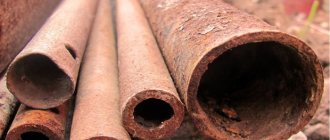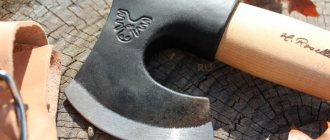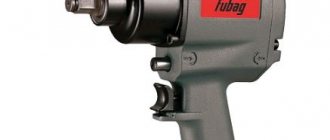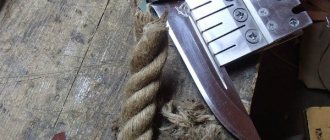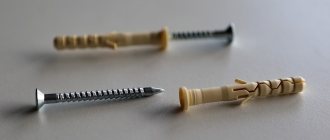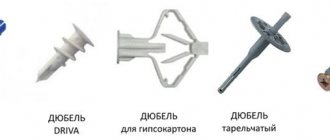Cleaver, its types, characteristics, recommendations for choosing this tool and rating of popular models.
Considering that the majority of the population of developed countries lives in cities, there are people who have no idea how firewood is collected for the winter.
In fact, in order to simply warm up the bathhouse, you need to prepare a decent amount of wood fuel, which is impossible with an ax.
And although there is an opinion that an ax is the main tool for preparing firewood, in fact it is intended for cutting down trees.
But the cleaver, the purpose of which is hidden in the name, is used to split logs and sawn tree trunks, turning them into logs in one movement.
Main characteristics
The cleaver is not an ax in the full sense, but it is directly related to it.
A hand tool has an ax handle on which a wedge-shaped working part (head) is mounted without sharp sharpening.
The cleaver is designed for a single blow, after which the log will split into pieces.
What is important here is not the sharpening of the blade, but the force of the blow.
Externally, the cleaver resembles more a sledgehammer than a classic axe.
One side of the head is flat (butt), and the opposite is wedge-shaped, made in the form of a double-sided cut at an angle of 40 - 50 degrees.
The weight of the cleaver reaches 5 kg, which allows it to cope even with large logs.
The meaning of this design lies not in cutting through the wood fibers, but in their delamination.
The thickness and length of the ax depends, first of all, on the size of the cleaver's head.
At the same time, the size of the handle directly affects the efficiency of work, since a long ax paired with a heavy head concentrates a decent impact force on a small area.
Blade
As already mentioned, the blade of the cleaver does not have a sharp edge.
Depending on the shape, wedge-shaped (wedge-shaped) and eared options are distinguished.
The second type, as the summer residents themselves note, is much inferior to the wedge-shaped ax in terms of ease of use.
It is noted that the head, due to the presence of “ears” set apart, often gets stuck in logs, after which it is difficult to remove.
The manufacturers themselves respond to this claim by saying that this design is designed to work with dry wood.
In reality, the owners of a private house use a tool to split raw, recently cut trunks, which is incorrect.
The piercing edge can be straight or rounded.
The first version of the cleaver is suitable for working with large dry logs.
The rounded blade has a larger size, which allows it to cope with resinous and damp wood.
The cleaver's head is made using the following methods:
• Stamping
Medium carbon steel is used.
In most cases, stamped cleavers weigh more than 2.5 kg, and their center of gravity is concentrated in the head. This allows you to use such a tool for working with large logs.
• Casting
The blade is made of hardened steel and is usually smaller in size compared to the option mentioned above.
They come in both straight and rounded.
Cast axes are more reminiscent of an axe.
Handle
The wooden ax handle is a classic.
It has always been used and will remain relevant for decades to come.
Unlike metal, wood has the beneficial property of absorbing shock and vibration.
In addition, wooden handles are relatively cheap and easy to manufacture.
All this affects the cost of the instrument for the better.
However, among the disadvantages it is worth noting the fact that the ax handle, if the technique of working with the cleaver is incorrect, splits.
An alternative to wood is fiberglass, a composite material with good strength properties.
Some models are produced with a rubberized handle, thereby increasing ease of use.
At the same time, it is lightweight, which allows you to shift the center of gravity of the instrument towards the head.
Fiberglass handle is a suitable solution for heavy cleavers.
Precautionary measures
When preparing firewood, it is imperative to observe safety measures, regardless of how this work will be carried out: with a cleaver or an electric or mechanical wood splitter.
You must always be on guard, as during the work, chips fly in different directions, the trajectory of which is unpredictable. Therefore, the area for chopping wood must be suitable, that is, at a distance from people and animals.
A cleaver (like an ax) is a dangerous tool, and one wrong move can result in injury. The correctly selected tool and the rules for its use significantly affect human safety.
Particular attention should be paid to the deck on which the firewood will be split, as well as to the lump that will split. It should not be larger in diameter than the block, and its height should be slightly above the knee. If you install the block incorrectly, it will be quite problematic to deliver the right and strong blow that will split it.
Before starting work, you need to think about your protection and wear goggles and gloves. Safety glasses will help prevent splinters and wood dust from getting into your eyes, and gloves will give you a better grip on the handle. If you follow all safety rules, this activity will become easy and even fun. Firewood will split easily and correctly.
Main types of cleavers
Hand cleavers can be divided into types depending on the size and shape of the head.
Modern instruments, due to their design features, can have several types of features at the same time:
Big cleaver
Large massive head and long handle.
Weight can reach 5kg.
Mini cleaver
It weighs from 1.5 kg and has a relatively short handle, up to 60 cm, which limits the scope of use of this tool.
Not suitable for working with large logs, and for thin branches it is preferable to use an ordinary ax.
“Iron”
A classic of domestic production.
A large tool with a hole for the handle located close to the butt.
Sledgehammer
A heavy tool designed for working with large logs.
The presence of a striking butt allows the tool to be used for driving in wedges.
Wedge-shaped
It has straight bevels and looks like a wedge.
Eared
Thin blade, like an ordinary axe.
At the same time, there are special “ears” on the head, designed to sharply expand the crack during an impact.
Chinese
The Chinese cleaver deserves special mention.
It is distinguished by a narrow nose, which, in fact, is a wedge with a handle.
It gets stuck into wood the first time, but often gets stuck tightly.
You can remove the head by hitting the butt on a log or by rocking.
As a result, you can observe a burst eye or a violation of the attachment of the ax to the cleaver.
Axe
It has an all-steel head made by stamping, casting or forging. Small hatchets (small-sized axes) are often equipped with composite heads made of a butt and blade welded together. Axes can have blades of various sizes and geometries:
- rounded, straight;
- wide, narrow;
- with chamfers (oval, straight).
This is due to the tasks being solved. Example. The model with a rounded narrow blade is perfect for cutting thick branches, trunks, and logs. Straight wide is the best solution for hewing. The presence of an oval chamfer requires significant effort when cutting. Flat bevels make it easier to machine flat surfaces. The most popular are construction (carpentry) axes, called standard.
Rules for working as a cleaver
Having even the most expensive branded cleaver at hand, you will not be able to work effectively without experience.
However, at first, the following tips will help you cope with this problem to some extent:
• The widest log with a flat cutting area serves as a stand for logs. Installed in a stable vertical position.
• To make the work easier, you need to wait until the freshly sawn logs dry out. Otherwise, the wood will be viscous, and this will lead to jamming of the tool. In winter, it is better to let the raw material freeze. So it will become loose.
• For rational fuel consumption, it is better to chop the lumps into pieces with a diameter of about 10 cm.
• It may not be possible to split large logs in half the first time. To save time, it is better to chop off pieces along the edge and then cut the “core”.
• If there is a crack in the log, it is advisable to hit it with a cleaver. When working with knotty material, it is necessary to hit the tool either along one of the branches or between them.
• An old cleaver with a wooden handle must first be soaked in water. The ax handle at the junction with the head will swell and securely lock, preventing the metal part from falling off during operation.
• The handle of the tool always has an extension at its end. This is done so that the hands do not slip when struck. You should take the tool right at the extension in order to achieve maximum impact force using the lever.
A tool stuck in the deck can be removed in several ways:
• Loosen.
• Hit the butt with a sledgehammer, which will cause the wood to split.
• Swing the cleaver together with the block, turn the tool in the air and hit the butt on the log stand.
Due to the enormous impact force, working with a cleaver carries the risk of serious injury.
By following the simplest rules, you can significantly reduce or eliminate the risk:
• The block of wood must be placed on the edge of the deck on the far side. If you miss, the instrument will stick into the stand.
• You need to hold the cleaver by the edge of the handle, keeping your legs wide apart. Again, if you miss, the blade will go into the ground, not into your leg.
• To avoid shock absorption by the deck - stand, it must be installed on a hard surface (asphalt, concrete).
• The work area must be clear of foreign objects. It is better to immediately remove already split logs from under your feet.
• The presence of people in the immediate vicinity of the workplace is unacceptable, since wood chips flying in all directions are dangerous.
Useful tips
- From the beginning, the logs are cut, it is worth considering the length of the logs, they must fit into the stove (the length is 20% less than the firebox).
- For sawing and chopping logs, choose a spacious place where there are no people.
- Do not place the deck on the ground, this will dampen the force of the blow and it will spring back.
- Try to place the block on the far edge of the block; if you miss, do not harm yourself. The blade will stick into the deck or go into the ground.
- When hitting, plant your feet wide, with your knees slightly bent to maintain balance.
- Hold the cleaver by the bottom of the handle, this will give a stronger blow, the movement should be inertial, and the blow should be from the shoulder.
- If the handle of the cleaver is made of wood and falls off, stuff it well and place it in water overnight (the wood will swell and this will last for some time).
- If a cleaver (axe) gets stuck in a log, turn it over and hit the butt on the block; if the wood is large, then you need to take a sledgehammer and hit the butt.
- If the log is large, look to see if there are cracks on the surface and chop along them, or trim it along the radius. Don't cut at the branches.
- To prevent logs from flying apart when chopping, place them in a car tire.
- The block for the chock should be of a larger diameter.
You must understand that freshly cut logs are difficult to chop; they need to dry out a little.
Fiskars or Homemade splitting ax. Tool selection
How to choose a cleaver
A cleaver is not a universal tool.
For this reason, there is simply no general advice on choosing the best model.
It is necessary to build on the shape of the blade, the length of the handle and the weight of the head.
The kinetics of the impact directly depends on them.
However, before you buy a specific cleaver you like, which in theory will perform the task, you need to check it for mechanical damage and absence of cracks.
The ax handle should sit tightly in the head; any play is unacceptable.
The handle should be comfortable and long enough, well polished.
Some models come with a case that will ensure safe storage and transportation of the tool.
It must cover the blade and sit securely.
Criterias of choice
Before you start leafing through brochures and browsing the websites of companies offering equipment, you should determine the following key selection parameters:
- need for firewood;
- quality of the forest (what species, straight, knotty, dry, damp);
- physical capabilities of the person who will work;
- reasonable purchase price;
- the amount of operating costs during service.
The choice of cleaver depends on the type of firewood and physical abilities.
So, which cleaver to choose for chopping firewood? If, based on the results of these assessments, it is decided that an ordinary hand cleaver will be sufficient, then you need to hold it in your hand and wave it several times. Please note that you will have more than one hundred such swings. To chop dry, thin logs without knots, an ordinary wedge cleaver weighing 1.5-2 kg will be sufficient.
If there are damp and knotty logs ahead, then it is better to choose a heavier ax with a long handle with additional protrusions in front of the butt, weighing 3-5 kg. Of course, it must be within the capabilities of the worker.
The handle is very important. it should be smooth, without burrs or roughness. Heels of logs for the fireplace or Saturday barbecue can be split with a regular birch handle. For large volumes, a plastic handle with rubber pads is better suited. It will better dampen vibrations and shocks that are inevitable when splitting dense, damp and knotty wood.
If the performance of a manual wood splitter is not satisfactory, then when choosing a mechanized model, you must take into account the following points:
- A place to work. A flat area is needed, preferably under a canopy from bad weather, to place a mountain of logs, the unit itself, and the logs chopped during operation.
- For vertical devices, the height of the room or shed should allow the longest logs to be laid freely.
- If the unit will operate outdoors, you will need a place to store it.
- The capabilities of the power supply network must match the power consumption of the drive.
- For complex devices, you need to immediately decide who and where will service and repair them if necessary.
And finally, a very important factor for deciding which cleaver to choose is the reputation of the manufacturer. An unnamed Chinese machine is unlikely to last long, and its repair may cost more than a new unit from a good brand.
How to sharpen a cleaver correctly
The question of sharpening the blade of a cleaver ax remains open today.
Is it worth sharpening it at all?
The thickness of the blade, as a rule, does not exceed 5 mm over the entire surface, and experts advise using a floating sharpening (sharpness increases towards the center of the tool blade).
This will allow you to cope with wood of various species.
The sharpening angle also matters.
For most cleavers, the wedge is sharpened at an angle of 40 - 60 degrees.
At the same time, an angle that is too sharp is not suitable for working with soft and wet material.
The tool will get stuck in the fibers.
An obtuse angle is not suitable for frozen and dry logs, as the tool will simply bounce off.
The blade is sharpened with an electric sharpener at low speed.
Periodically, you need to moisten the wedge of the tool with water, which will prevent it from overheating during friction.
Terms of use
Even with the best model of a cleaver, an inexperienced person will not be able to work effectively. When chopping wood for the first time using a cleaver, we recommend using some tips that will make your work much easier.
First, you need to choose the widest deck and place it evenly on the ground. Chocks will be installed on it, like on a block. In addition to organizing the workplace, you need to pay attention to the logs themselves, since wet logs will split much harder, while dry ones will split in no time.
The split firewood must match the size of the firebox in which it will be used. Their length should be no more than three quarters of the oven space, and their diameter should not be more than 10 centimeters. Such firewood will burn for a long time and save fuel.
The number of parts from one chock completely depends on the size of the chock itself. From small logs you get 2-4 pieces, from large ones - about eight. When working with large logs, do not try to split them in half in one motion. It will be much easier to trim them around the edges and cut the rest in half. At first, this process seems very simple, although it is quite possible to improve this matter and spend less energy.
Before harvesting, be sure to dry the firewood or at least dry it a little. In winter, the logs need to be allowed to freeze, then the wood will not be loose and will split easily. If there is a crack on the chock, then you need to try to get into it. If this fails, then you need to insert a blade into it and hit the butt with a sledgehammer. If you don’t have a sledgehammer, then you need to take a deck with a cleaver, swing it hard, turn it over in the air, and hit the block with the butt. These are radical measures in which the lump will definitely split.
If there are knots in the deck, then you need to hit between them. If there is a problem similar to the situation with a crack, then you need to do the same. Chopping wood with your own hands is not that difficult. The main thing is not to rush and quit at the first failure. You need to try again - and with experience this activity will bring pleasure.
How to properly store a cleaver
Storing a cleaver is no different from storing an ordinary axe.
Branded models are paired with plastic or leather cases, which allows you not only to store, but also to safely transport the instrument in a car or even public transport.
The metal part is coated with lubricant to prevent rust formation.
A tool with a large head can be safely coated with a thin layer of automotive oil.
For branded expensive models, a special lubricant for the ax is sold.
Tools with a wooden ax should not be stored in direct sunlight.
It is also not recommended to work in temperatures below -20.
It is best to store axes in rooms with average humidity.
What else can you use to chop wood?
Manual wood splitter KOLUNDROV “Standard”
The closed ring shape serves to hold the deck. How it works: insert the log into the ring on the piercing edge and hit it on top with a sledgehammer. This is a very safe device that will protect you from injury. It is also a plus that the split logs do not scatter to the sides.
Buy
Characteristics
| Construction type | manual |
| Location | vertical |
| Deck diameter | 18 cm |
| Top ring inner diameter | 20 cm |
| Weight | 6.6 kg |
| Add. information | 8 layers of anti-corrosion coating with patina; material: steel st-3; 4 mounting holes; internal diameter of the upper ring is 20 cm; protective cap for a sharp blade; 3 year warranty; packaged dimensions: 30 x 30 x 36 cm |
Design
There are axes for chopping wood:
- screw (cone-shaped);
- hydraulic;
- electric.
The first type is the most common, used by 80% of consumers. The cone-shaped steel pig has a strong thread and can be driven into the material using an electric motor. Cone splitting axes are used for cutting firewood. On trading platforms you can find prepared kits that allow you to assemble such a tool in a few minutes.
The ax handle is made of durable wood, and the handle can be made of oak, ash or birch. Sharpening is usually done at an angle of 40-50 degrees.
Cleavers are differentiated into the following types:
The first type is often confused with a sledgehammer - they are so similar, the second type has a more pointed blade. Also, cleavers can be cast or forged. There are no fundamental differences between them.
The cleaver blade can be:
The latter type can be considered a novelty; workers with extensive practical experience treat it with distrust and express critical remarks. Manufacturers state in the instructions that this tool can only be used with dry firewood. It is recommended to take this fact into account when choosing a tool.
The wooden parts of the cleaver have disadvantages - they can spontaneously split. In recent years, handles have begun to be produced from a new material – fiberglass. This composite material is durable and lightweight. Its advantage is that the feedback to the hand is noticeably less than that of a wooden handle; the material is able to actively absorb vibration. You can also make the ax handle very long from fiberglass, which has a positive effect on the impact force.
What is it needed for?
There is a wide variety of models of cleavers that significantly facilitate physical labor, helping to chop firewood in a short period of time. A cleaver is noticeably different from an ax - this tool is intended exclusively for chopping wood. Externally there are also noticeable differences. The cleaver looks like a sharpened metal pig weighing at least 3-4 kg. It has a long, strong ax handle that allows you to remove the tool even from very tough wood. Almost any tree can be split with such a tool, but an alternative to the cleaver has not yet been invented. Its design is simple and functional, which explains why this instrument has been popular for hundreds of years.
Modern technologies and materials make it possible to improve the traditional cleaver design. Nowadays, different types of cleavers have appeared, among which are the following:
- with an offset center;
- manual cone;
- rack and spacer;
- heavy forged;
- with electric or gasoline engine (automatic).
Modern developments are working well for the Finnish company Vipukirves, which offers a wide variety of models that have a “floating” center of gravity.
Typically, additional accessories to the main product are not cheap, and sometimes their design can be quite complex.
Let's look at several types of cleavers that are especially popular.
Screw splitter
It has become widespread among farmers; making such a tool yourself is not very difficult. To make a screw cleaver with an electric drive, you will need:
- an engine with a power of at least 1.8 kW;
- roller with mounted bearing;
- pulley;
- threaded cone;
- metal sheet 5 mm thick;
- corners "4";
- pipes 40 mm;
- bearing.
If you set the engine to 450 rpm, then there will be no need to mount a pulley, then the cone can simply be attached to the shaft. The optimal choice is therefore a speed of 400 per minute. The cone can be ordered from a turner or turned out yourself according to a pre-drawn drawing. The material from which the cleaver is made is steel with a high carbon content. The thread should be in increments of 7 mm, and the turns can reach 2 millimeters. The pulleys are machined from ordinary steel. The size of the groove is determined by the parameters of the pulley.
To assemble a cleaver that works on the screw principle, you must first make a base, place a plate under the tabletop on which the engine will be supported, and on it, in turn, the shaft. You can also attach the cone and pulley, and then install and tension the belt. After this, you can move on to tests.
Hydraulic wood splitter
Has good power and performance. The stationary tool is massive, works using a cylinder in which the operating pressure is provided by a pump. It is placed on the same shaft with an electric motor; it is also important to take into account that the unit can be placed even at the other end of the room (not necessarily on the frame). The connection can be made using special hoses.
After the drawings have been selected and the necessary components have been purchased, you should think about how to make the shape of the cleaver. Welding from metal is the simplest solution. The sizes can be any. Here the power of the cylinder is of decisive importance. It should be enough to split massive wooden ingots that are fairly saturated with moisture. This material has the highest viscosity coefficient and is especially difficult to work with.
A cleaver is a type of ax designed exclusively for chopping wood.
Some may have a logical question: “Why go to the store and buy a splitting ax if you can split firewood with an ordinary ax?” I advise you to simply try to chop at least medium-sized logs with an axe. Very soon, tired and exhausted from pulling a jammed blade out of logs, you will want to at least try using a cleaver to split firewood. The article talks about how to choose a cleaver for firewood, gives tips on splitting and how to properly remove a stuck blade.
Devices to facilitate the process of chopping wood
Splitting firewood is a physically difficult process, so both craftsmen and research groups of splitting companies are working on the issue of increasing its efficiency.
Some simplest original solutions:
- Two windows are made in the body of the cutting part into which rollers are inserted. Their rotation prevents the cleaver from getting stuck in the deck. But the durability of such a tool is very problematic.
- To prevent the logs from scattering, the deck is wrapped with a chain with a rubber insert. One suggestion is to install several logs in the old ramp, which will also prevent the scattering of logs obtained during chopping.
- There are many models of cleavers that provide high productivity - mechanical, electric, hydraulic with an electric motor and hydraulic with a gasoline or diesel engine.
Taiga
And if you want practicality, then taiga, with a medium handle. It chops and chops, and it’s convenient to carry logs and hang them on branches. I myself prefer the last option, but I plan to make it myself.
Wood splitter with washing machine engine
I haven't used it, but it looks like a device of very questionable effectiveness. Each small block of wood, instead of being quickly baled with a cleaver and cleanly split, must be placed on this thing for a long and tedious time and split at both ends and several sides, and then still broken off by hand. And all this while bending over: your back will go on strike on the second day.
